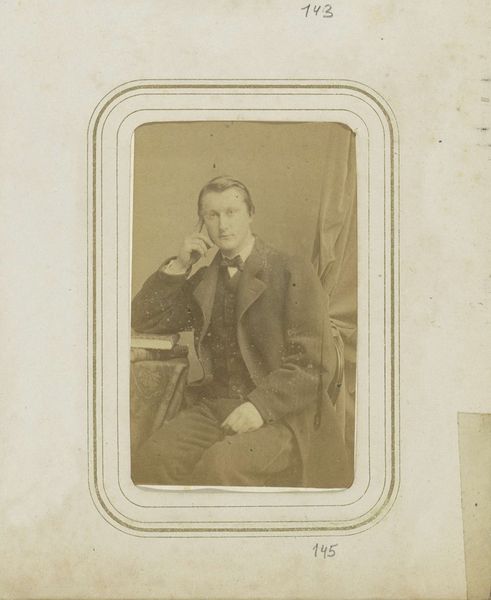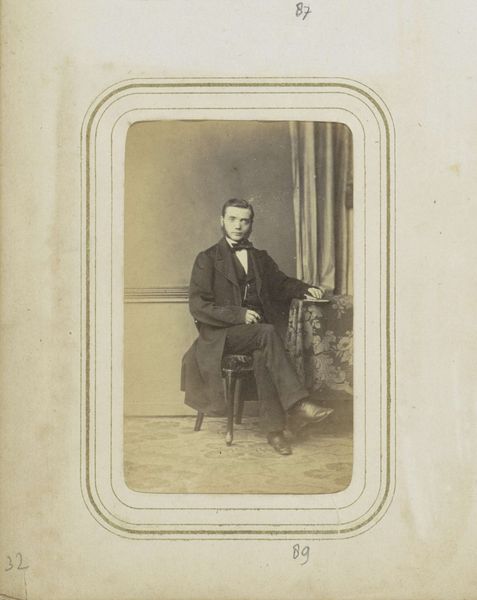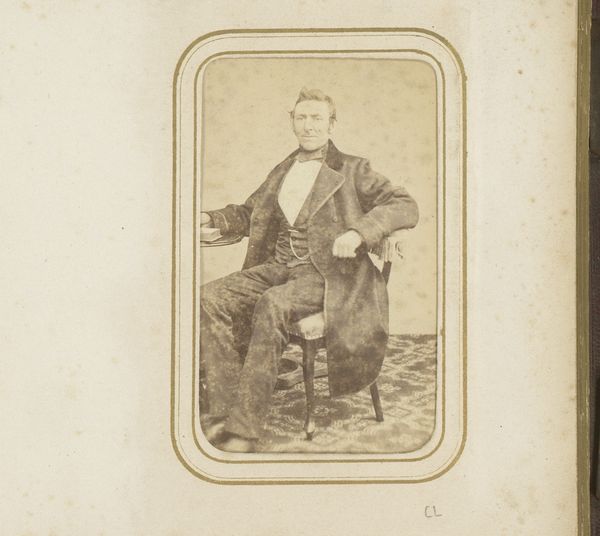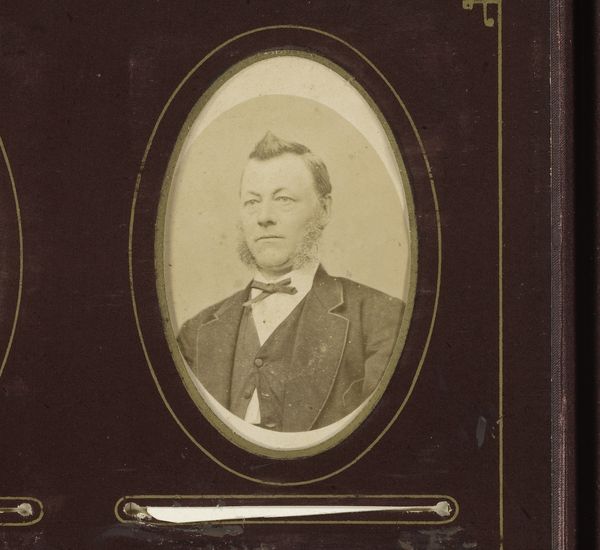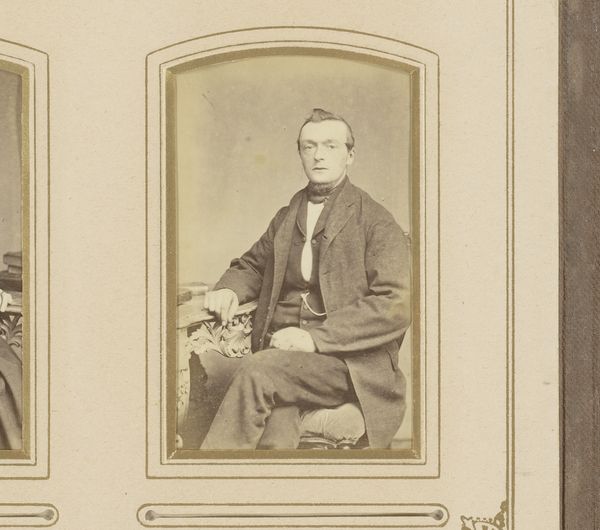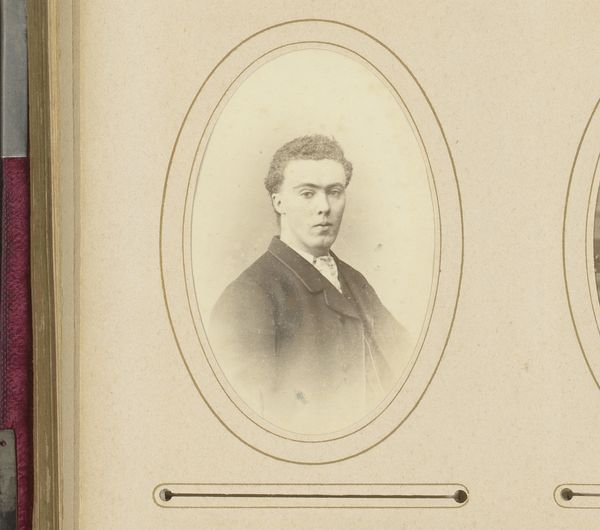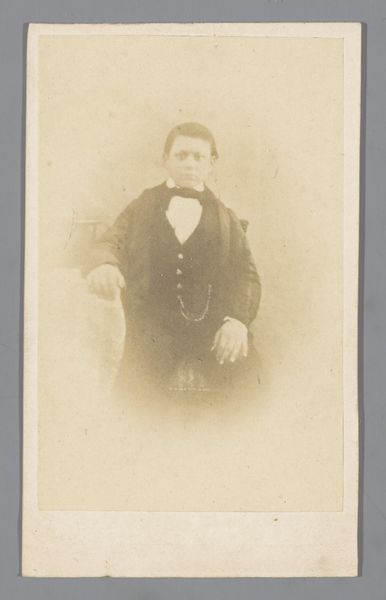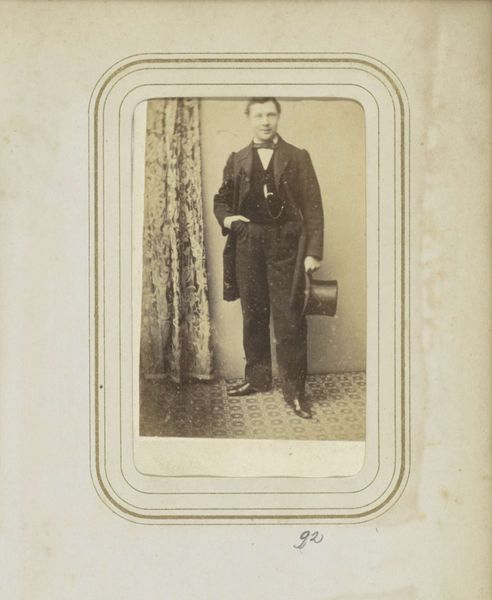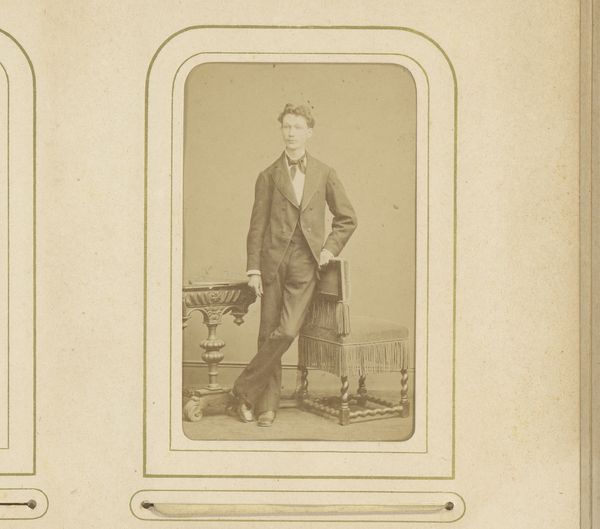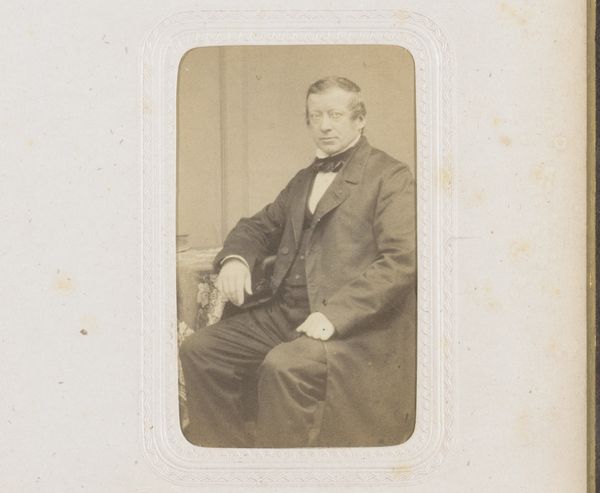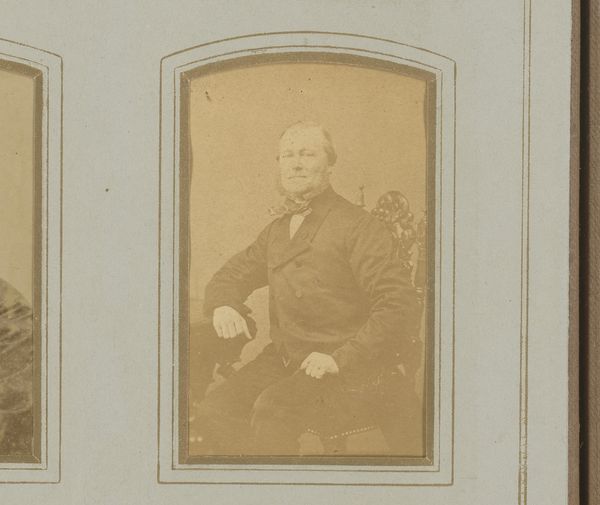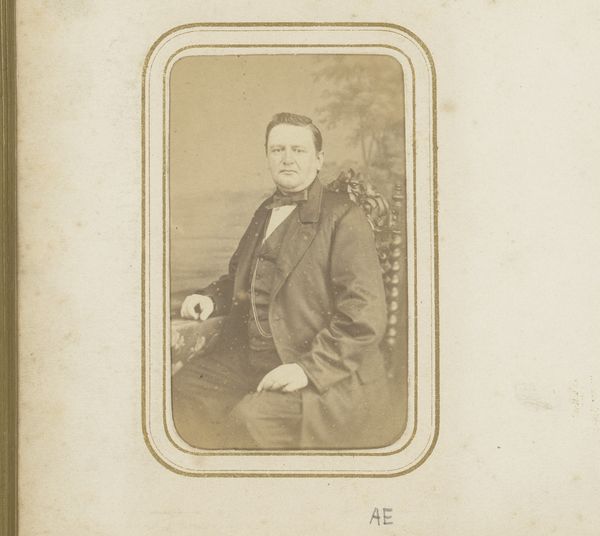
daguerreotype, photography
#
beige
#
portrait
#
aged paper
#
toned paper
#
earth tone
#
light earthy tone
#
daguerreotype
#
photography
#
brown and beige
#
warm-toned
#
neutral brown palette
#
cardboard
#
genre-painting
#
brown colour palette
#
realism
Dimensions: height 84 mm, width 51 mm
Copyright: Rijks Museum: Open Domain
Pieter Siewers produced this photograph of a seated man sometime in the mid-19th century. As photography became more accessible, portraiture shifted from the exclusive domain of the wealthy, captured in painted likenesses, to a broader demographic able to participate in visual self-representation. This image offers a glimpse into the codes of bourgeois identity in the Netherlands during that period. The man's formal attire, the carefully arranged setting, and even the somewhat stiff pose, all contribute to a carefully constructed image of respectability and status. The rise of photography coincided with a period of significant social and economic change, and these portraits served as important tools for individuals to assert their place within the evolving social order. Understanding this image requires delving into the history of photography, the social history of the Netherlands, and the visual culture of the 19th century. By examining sources such as period newspapers, etiquette manuals, and studies of Dutch social history, we can unlock the rich layers of meaning embedded within this seemingly simple photograph.
Comments
No comments
Be the first to comment and join the conversation on the ultimate creative platform.


